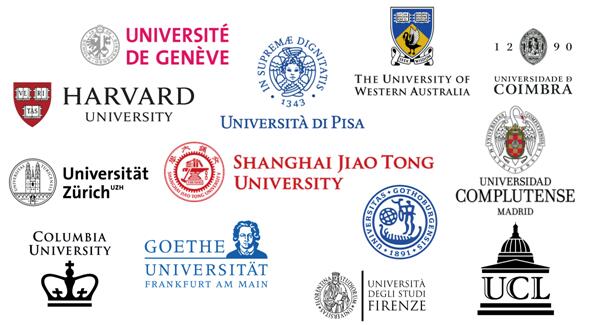Why is "Cancer King" immunotherapy ineffective? Fudan Cancer Hospital Reveals New Mechanisms of Immunosuppressive Environment for pancreatic cancer CRIP1 | Tumor | pancreatic cancer
Immunotherapy has been proven to achieve significant therapeutic effects in various solid tumors. However, for pancreatic cancer, known as the "king of cancer", immunotherapy has been ineffective. On August 4, Professor Yu Xianjun, Dean of the Cancer Hospital Affiliated to Fudan University, and Shi Si, Associate Professor of Pancreatic Surgery released a research achievement, which first found the key role of cysteine rich protein 1 in shaping the immunosuppressive microenvironment of pancreatic cancer, filled the gap in the research field of immunosuppressive microenvironment of pancreatic cancer, and provided a theoretical basis for precise immunotherapy of pancreatic cancer patients.
Ductal adenocarcinoma of the pancreas is the main type of pancreatic cancer, accounting for about 90% of all pancreatic cancer. Due to its high malignancy and poor treatment effectiveness, pancreatic ductal adenocarcinoma has always been one of the most malignant tumors. In recent years, surgical techniques and comprehensive treatment have made rapid progress, but have not brought significant improvements to patient prognosis.
Previous studies have shown that tumor cells in pancreatic ductal adenocarcinoma have a high degree of heterogeneity and inherent characteristics that lead to immune evasion. They interact with other cells through genetic changes and downstream pathways, playing a huge role in shaping the immunosuppressive microenvironment and may be the culprit behind the poor efficacy of immunotherapy. Therefore, exploring the mechanism of tumor cells in shaping the immune microenvironment of pancreatic ductal adenocarcinoma, seeking solutions to improve the tumor microenvironment, and screening the population that can benefit from immunotherapy are crucial for precise treatment of pancreatic ductal adenocarcinoma patients.
How can we effectively find the key to activate the immune response of pancreatic cancer? Professor Yu Xianjun and Associate Professor Shi Si's team conducted research on the immunosuppressive microenvironment of pancreatic ductal adenocarcinoma using tissue mass spectrometry imaging system, RNA sequencing, cell mass spectrometry flow cytometry analysis, and multiple immunohistochemistry fluorescence staining methods.
Previous studies found that compared with normal pancreatic tissue, the expression of cysteine rich protein 1 in tumor tissue was significantly increased, and it was closely related to the infiltration of immune cells in pancreatic cancer. In pancreatic ductal adenocarcinoma tissues with high CRIP1 expression levels, the infiltration level of bone marrow-derived suppressive cells is higher, while the infiltration level of CD8+T cells is lower.
In addition, the depletion state and immunosuppressive state of T cells are more common. Mechanistically, CRIP1 binds to p65 and promotes its nuclear translocation through an input protein dependent manner, increasing the binding of p65 to the CXCL1/5 promoter and promoting NF- κ The transcription function of B induces the secretion of chemokines by tumor cells, thereby promoting the infiltration of MDSCs in tumor tissue.
In further animal experiments, the experimental results of a mouse pancreatic orthotopic transplantation tumor model showed that CRIP1 can promote the infiltration of MDSC in tumors. Under the mediation of CXCL1/5-CXCR1/2, it induces the formation of an immunosuppressive microenvironment and inhibits the infiltration of CD8+T cells and the activation of anti-tumor immunity. During the experiment, a mouse pancreatic orthotopic transplantation tumor model was used to explore a combination of immunotherapy and drugs to improve the tumor microenvironment. In the transplanted tumors overexpressing CRIP1, CXCR1/2 inhibitor SX-682 inhibited the recruitment of MDSCs, thereby promoting the infiltration of cytotoxic T cells into the tumor and significantly slowing down tumor growth. Meanwhile, in pancreatic orthotopic transplantation tumors overexpressing CRIP1, PD-L1 inhibitors combined with SX-682 therapy can effectively activate anti-tumor immune responses.
Yu Xianjun said that, in view of the dilemma that most pancreatic cancer patients have poor anti PD-L1 treatment effect, through a series of studies, it was the first time to find the key role of cysteine rich protein CRIP1 in shaping the immunosuppressive microenvironment of pancreatic cancer. The combination of CXCR1/2 inhibitor treatment can enhance the anti PD-L1 treatment effect of pancreatic cancer with high expression of CRIP1, which provides a theoretical basis for the combination of PD-L1 antibody and CXCR1/2 inhibitor in clinical practice, and makes it possible for pancreatic cancer patients to benefit from immunotherapy.
Dr. Liu Xiaomeng, Dr. Tang Rong, and Chief Physician Xu Jin from the Pancreatic Surgery Department of Fudan University Affiliated Cancer Hospital are the co first authors of this paper, with Professor Yu Xianjun and Associate Professor Shi Si as co corresponding authors. This study was supported by the Regional Innovation and Development Joint Fund of the National Natural Science Foundation of China and the Science and Technology Innovation Action Plan of the Shanghai Municipal Science and Technology Commission.




